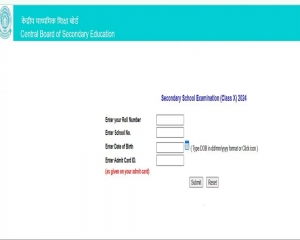India, at a crucial geopolitical juncture, aligns with Artemis Accord and plans Chandrayaan-4 mission with Japan. Drawing from riparian regimes, the discourse on lunar governance explores adaptive solutions and common pool resource principles, positioning India as a leader in shaping lunar exploration’s future
India is in an interesting geopolitical moment. On one hand, India has joined the Artemis Accord, and on the other hand, it has plans to collaborate with Japan to send a probe called Lunar Polar Exploration Mission in 2026, also referred to as the Chandrayaan-4 mission. With this astute act of balancing, in the coming years, some space analysts estimate that India’s Lunar South Pole capacity can help scale up some of the goals of the Artemis programme, including lunar resource utilization. However, while these incidents suggest an acute act of external balancing, one needs to also ask whether governance and geopolitics have a meeting point.
As India navigates its position, it should carefully consider the nature of space norms. In this context, one must ask whether there are any suggestions for lunar governance, particularly after India’s successful moon landing of Chandrayaan-3. There has been substantial public interest in the topic of lunar water ice since then. Questions related to water ice on the Moon have been a focus of lunar exploratory missions in the past. In fact, a recent report claimed that water has not only accumulated at the lunar poles but may also be found in Permanently Shadowed Regions (PSR) depressions that have been permanently blocked from sunlight. It has also been estimated that some of these PSRs must have been eliminated in the past, with water sublimating into gas. This implies that PSRs are non-renewable and finite resources.
Given the unique ecosystem of space and its multiple resource systems, questions related to the sustainable management of lunar governance have become significant. When conceptualising how lunar ice (and other non-renewable lunar resources) might be governed, terrestrial water governance regimes can provide an important reference point, shedding light on numerous complex dynamics in managing common pool resources. However, the significance lies not in its strategic value but in the analogous criteria it offers from the perspectives of water laws, politics, and governance. These provide a lens through which we can understand how lunar resources of strategic value may be governed. Given the significance of governance in Outer Space, many analogous references have been made. Facets related to ocean governance, which were negotiated through the United Nations Convention on the Laws of Seas (UNCLOS) have highlighted issues related to sustainable management and freedom of movement in global commons.
Similarly, questions related to soft and hard laws through the Antarctic Treaty System are also significant.
However, when one deliberates on the nature of challenges and the politics of space resources, the management of the oceans is not the only relevant analogy. Riparian laws and regimes also offer a significant paradigm on which to build. Some of the issues explored in riparian regimes pertain to property rights, questions of ownership and regulation, adaptive and risk governance, and temporal priority, among others. Riparian regimes are significant because they have negotiated similar governance issues relevant to outer space in general, lunar governance in particular, and more specifically, the management of lunar water ice in Permanent Shadowed Regions.
For instance, the issue of property rights has been enduring, especially concerning water rights. In rivers, these rights are partially public and partially private. Significantly, the articulation of property rights differs between surface water regimes and groundwater regimes.
Riparian regimes typically grapple with balancing two competing principles. In surface water regimes, the “Harmon Doctrine” suggests absolute use over resources within its territory, regardless of the impact on lower riparians. On the other hand, the “Riparian Integrity” doctrine states that a country may not alter the natural flow of water in a way that adversely affects upper or lower riparians. A compromise formula has been suggested, stressing “equitable and reasonable use” and the “No Harm principle”.
Most countries have negotiated bilateral and multilateral arrangements according to their interests. In both groundwater and surface water debates, “reasonable use” is normatively emphasised, meaning one cannot exhaust the water source or prevent others from using it.
However, given the politics of water resources, water laws have been interpreted and translated differently by countries worldwide. Similar issues are nearly guaranteed to arise with respect to lunar resources, where rules regarding the prohibition and extraction of resources are ambiguous.
In riparian governance, several potential solutions have been explored: water shares, collective rights, and prior appropriation. Proportionate sharing rights entail that users can use rights in proportion to their licensed allocations, converting water rights into water shares. Alternatively, some cases emphasise correlative rights, limiting water users to reasonable shares, as opposed to unlimited use. The concept of prior appropriation advocates that only those with a permit may divert water from the resource-meaning the one who captures the resource first gets to use it first. These alternate and sometimes contentious approaches provide analogous perspectives to space resource use, emphasising the importance of crafting an overarching architecture while considering these debates.
Thus, the long history of riparian negotiations, its issues, and solutions should be relevant for lunar governance, where distinct resource systems are available for exploration and use. For instance, the Permanent Shadowed Regions and Lunar Regolith are small ecosystems with their own specific characteristics associated with the roles different stakeholders can play. In this case, activities like mining, scientific investigations, manufacturing, construction, and tourism draw attention to the concept of “boundaries,” specifying who has access, how resources are allocated, and the purpose of such allocation. Principles of adaptive governance can help shed light on some of these complex areas.
What lessons can be drawn from riparian regimes? In terms of solutions for riparian regimes, adaptive governance has emphasised the need for integrated management and conjunctive uses of surface and groundwater. This involves formulating resilient water institutions based on self-organization principles articulated by Elinor Ostrom. These principles address collective action problems, suggesting that actors should be able to switch between levels and solve problems collaboratively. A networked governance structure, grounded in effective communication, collaboration, and interaction, is key to such institutional designs.
Thus, elements that could enable, bridge, match, and facilitate actor interaction were considered fundamental for adaptive governance.
Moreover, like rivers, we can characterise outer space resources such as lunar water ice as ‘common pool resources’ and draw on the rich literature and insights of Ostrom and her followers in successfully managing such systems. These insights are valuable for understanding the resilience of international regimes, the nature of multi-stakeholder interactions, and global rule-making. Questions like these can significantly inform issues related to lunar and outer space governance.
Similar to terrestrial common pool resources, methodological frameworks of socio-ecological systems (SES) can effectively help study the interactions between social, ecological, and governance systems. To date, no effort has been made to create an SES model for the Moon.
While much of the current debate centres on great power politics and the control of lunar resources and their impact on geopolitical configurations, it is crucial that aspirational emerging powers like India consider the architectures of lunar governance, enabling them to assume a leadership role. By expanding the debate to include the use of common pool resources, India could lead in establishing principles of adaptive governance. Insights from ongoing water governance debates could offer valuable suggestions toward creating a workable lunar governance system.
(The writer is Associate Professor, Department of International Relations, South Asian University)


























